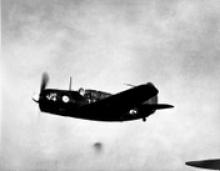During World War II, over a thousand women in the U. S. joined the Women Airforce Service Pilots (WASPs) as civilian pilots. The Army Air Force created what they called the Women's Auxiliary Ferrying Squad in September of 1942. They paid for their flight lessons and pilot training and tested and ferried aircraft, freeing men for combat flying. Two years later, the program ended and the women were sent home. Their con
tributions to the war effort were mostly ignored and forgotten, so much so that in 1976 the U. S. Air Force announced that for the first time, female pilots would be flying jets—completely ignoring the WASPs. This encouraged the WASPs to start talking about their experience in World War II. You can see a short documentary about WASP Vi Cowden here. Vi flew 19 different types of "Pursuit Planes", including the P-51, logging thousands and thousands of flight miles. Like the other WASPs, Vi Cowden was expected to follow military discipline, without holding military rank or receiving benefits like insurance. In 1977 Congress finally responded to significant lobbying and awarded the women who served in WASP with military active duty status for their service.On March 10, President Obama awarded these civilian WASPs the Congressional Gold Medal. You can see a gallery of pictures here. You can read more about the WASPs here.
Image credit: U. S. Airforce WASP pilot Helen W. Snapp flying her SB2C Helldiver aircraft over Washington, DC, United States, Jun 1944.
